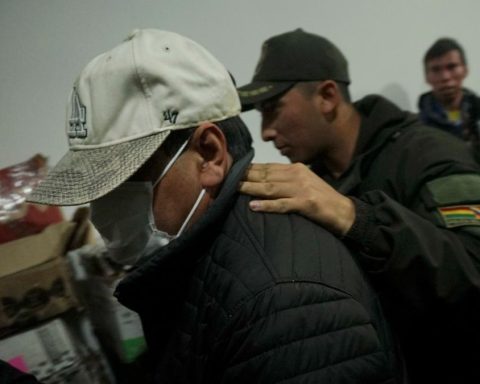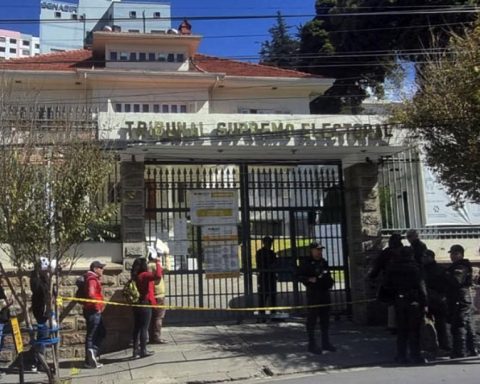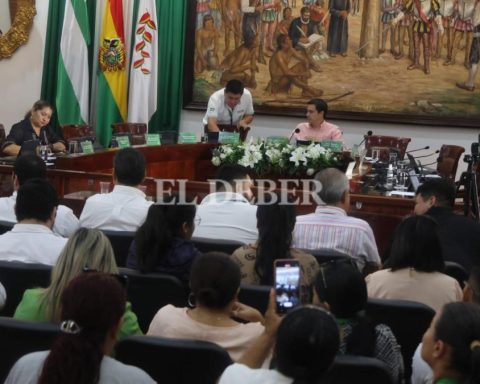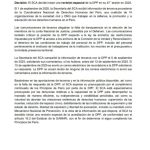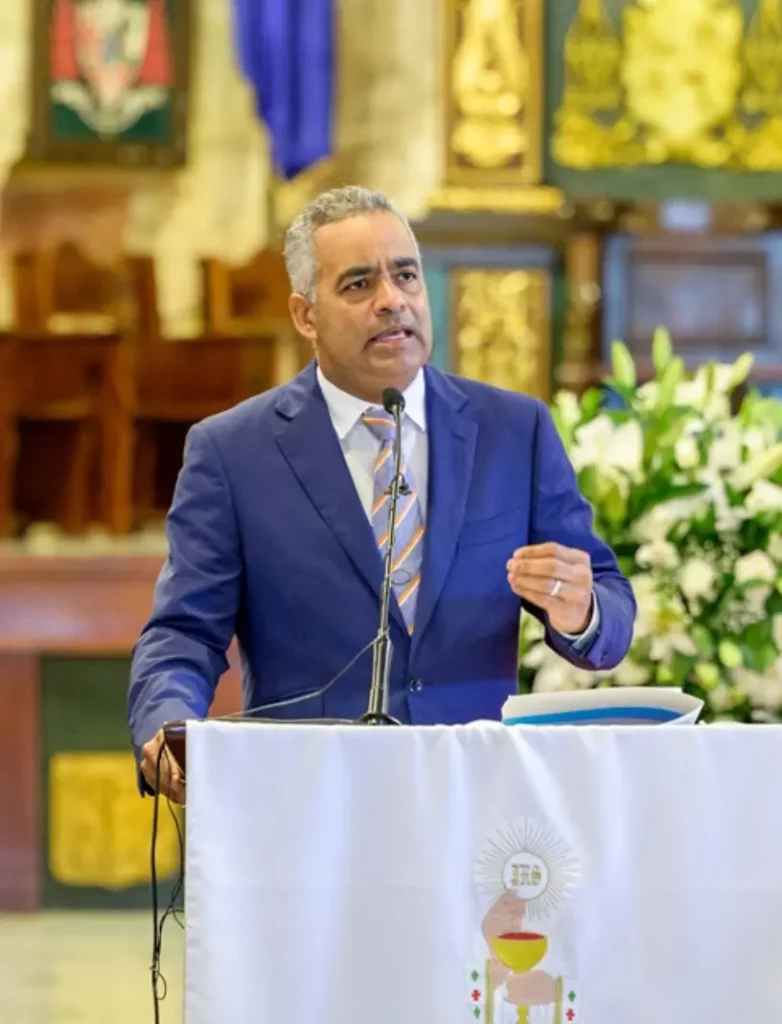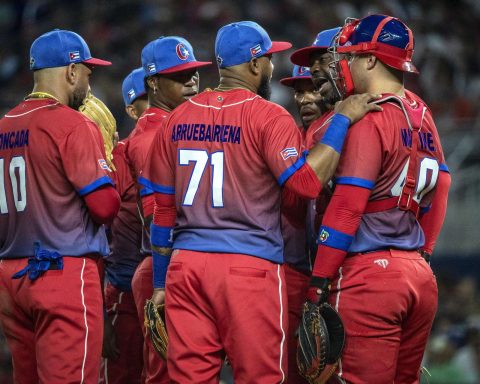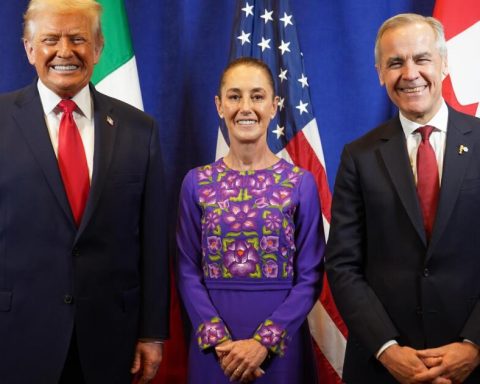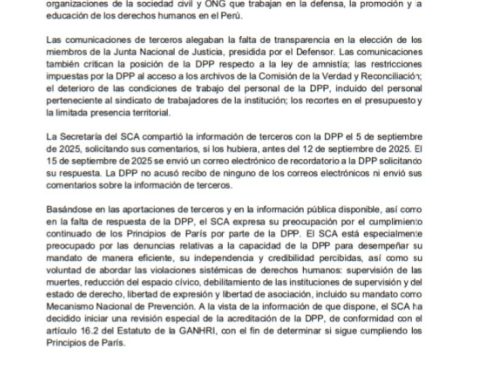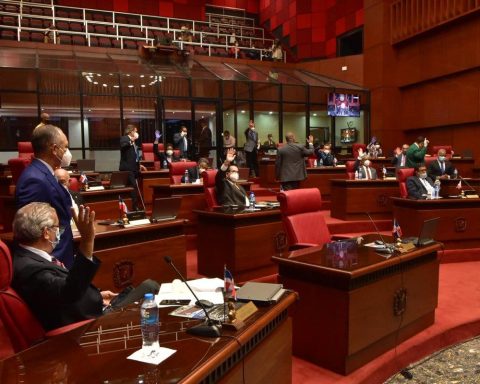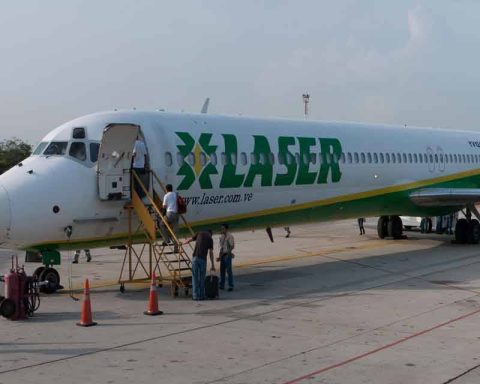Yolanda Mamani C / La Paz
On the sixth day of the so-called “march for the homeland” of the Movement Toward Socialism (MAS) called by Evo Morales, the mobilization will enter the city of La Paz from four sectors, in a kind of analogy to the dismemberment of Túpac Katari, he said. yesterday Vice President David Choquehuanca.
“Our ailing Túpac Katari has been dismembered and one of its limbs has taken it to Chulumani. We have to regain the kamasa (strength) of our brother Túpac Katari. That is why tomorrow from different points they will arrive in the city. Tomorrow, from seven o’clock in the morning, they are entering through Pampahasi, others will arrive through Oruro, others through the highlands and others through this side (on the way to Yungas) ”, declared the authority yesterday.
Choquehuanca, together with President Luis Arce, participated yesterday in the start of the march of the MAS social organizations that live in the north of La Paz.
The large group concentrated in Urujara, in the summit sector, on the way to the Yungas, where an Andean ritual was performed that consisted of an offering to the Pachamama (Mother Earth).
Both Arce and Choquehuanca, as well as the leaders of the interculturals, issued speeches in defense of the government, of the “change process” and reiterated that the party march administered by the State is to defend its victory at the polls with more than 55% .
“With the permission of the Pachamama we started the march towards La Paz, together with our brothers from the north of La Paz. We join the march for the homeland to tell the right that, today more than ever, the Bolivian people are united to enforce their vote, ”said Arce. He added that the march “is peaceful but firm.”
Evo’s journey
Photo: Evo Morales’ Facebook
Sunday was the sixth day of the walk between the Oruro plateau and La Paz, in the march led by Evo Morales.
The caravan left Calamarca early for Achica Arriba, where it arrived at noon. In that place the customary concentration and broadcast of speeches by the different leaders of the Pact of Unity took place.
Morales reported that the concentration this Monday to enter La Paz will leave the Apacheta at 6:00, where they will first perform an Andean ritual.
“Tomorrow we have decided (that) at six o’clock we are starting from (the) Apacheta. I would like to start here (Achica Arriba) but it is impossible, we are more than 50,000, they will not enter, they will not be able to sleep, they do not reach the houses, they almost burst, “said Morales.
He added that since there are not enough houses to accommodate everyone, some will go to sleep in El Alto, Viacha or Calamarca.
“Yesterday I returned to sleep until Patacamaya, they do not reach the houses, there are thousands and thousands. That is the conscience of the Bolivian people ”, declared the ex-president.
Stage
The so-called “march for the homeland” was announced by Morales on November 12, in the midst of the multisectoral civic strike that demanded the repeal of Law 1386 of National Strategy Against the Legitimation of Illegal Profits, which the Arce administration repealed.
The coca grower leader said that the march was to support the President and demonstrate that they are in defense of the democracy of those who want to destabilize and “discredit” the government, referring to the civic, union, transporters and opposition leaders who were protesting against the enacted laws. .
A day later, on November 13, Arce together with leaders of the Central Obrera Boliviana (COB) announced the repeal of Law 1386 “so that there are no more pretexts” for the mobilizations and that everything returns to normal.
The “march for the homeland” began its journey in Caracollo on Tuesday, November 23, led by the head of the MAS and leaders of the COB, peasants, Bartolinas, intercultural, indigenous, as well as legislators, ministers, officials and diplomatic representatives, such as This is the case of the ambassadors of Argentina, Ariel Basteiro, and of Nicaragua, Elías Chévez.
Six days of march
-
Beginning The MAS march began on November 23 in Caracollo, Oruro. President Luis Arce participated in the beginning and was on a section between Ayo Ayo and Calamarca.
-
Diplomats On November 25 and 26, the ambassadors in Bolivia from Argentina, Ariel Basteiro, and from Nicaragua, Elías Chévez, participated in the “march for the homeland”.
-
Ad On Wednesday, November 24, Evo Morales announced that the MAS march upon its arrival at the government headquarters “is going to blow up La Paz.” Days later, he clarified that “he will make La Paz burst with joy”
POINT OF VIEW
Pedro Portugal
Analyst and Historian
This march is going to be historic because of the fiasco and the imbalance it represents. Every march has causes, it has motivations and it has purposes.
What are the causes? It was planned at a time when there was a serious indication of confrontations in Bolivia, as a result of the laws that the government approved, especially the law against illicit profits, a long pulse was expected between the government and the opposition that called for the repeal .
This pulseta did not take place because surprisingly and quickly, the government withdrew first Law 218 and then Law 1386.
What are the motivations? If the march is maintained, it is for two reasons. First, these types of marches arise when there is tension or when the reason for these marches is in the opposition and has some demands.
Second, those who carry out the march are in function of the government, it is not a protest march, it is a march that reveals a weakness because it wants to fortify something and that is not seen as a reinforcement of Luis Arce, but as a manifestation of weakness.
The third element is that throughout the march the strengths and weaknesses of the MAS have been revealed. The marches with which the MAS wants to parallel were marches of social movements that demanded a vindication, now it is a march of civil servants.
You see a line of people marching and next to it a line of cars that are following that march at a slow pace, cars that take and bring people to that march.
So it is not combative at all, it is a laughable question, supported by officials, MAS sympathizers and foreigners who have the myth that a struggle between tendencies is taking place in Bolivia.

